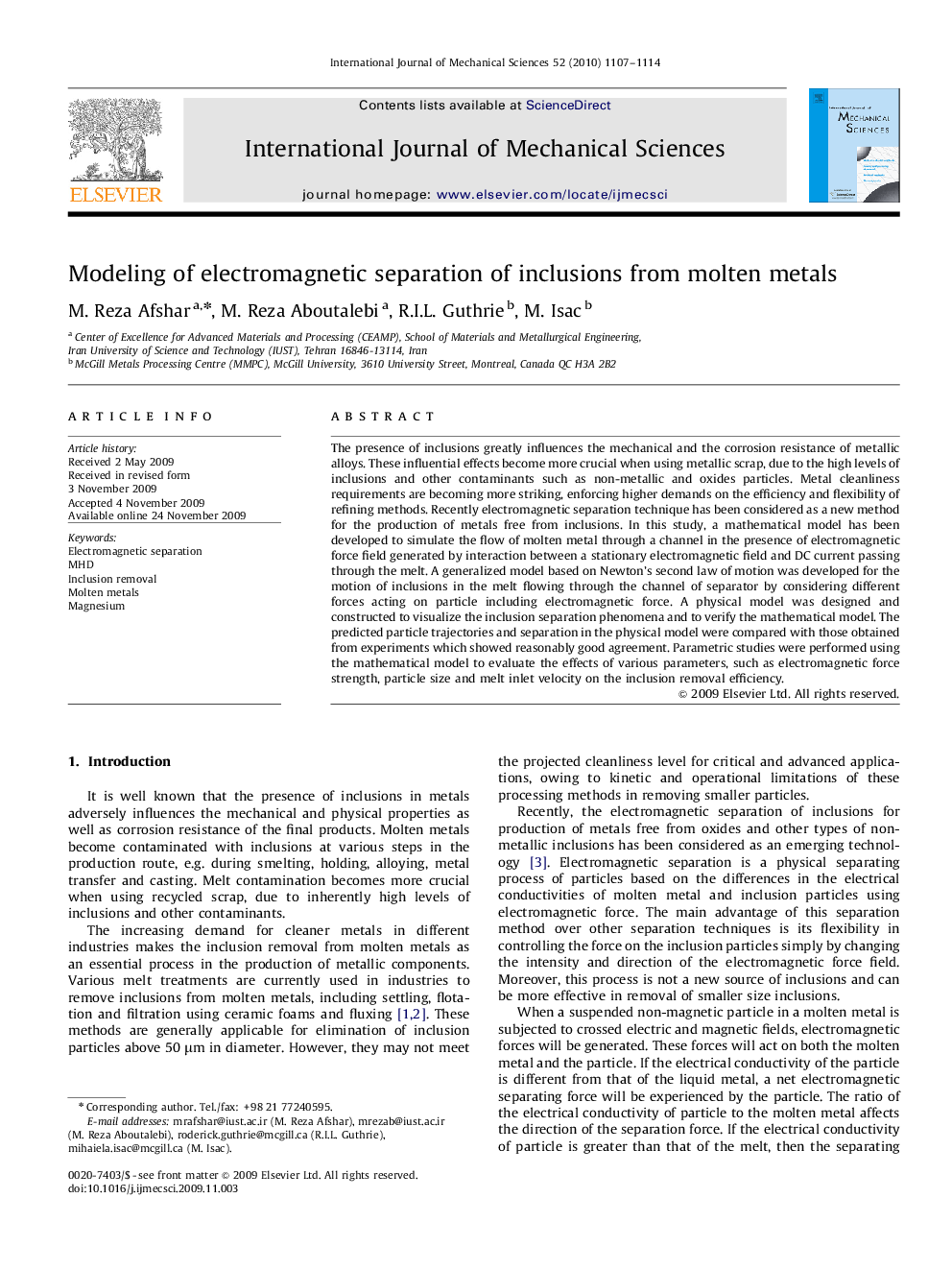| Article ID | Journal | Published Year | Pages | File Type |
|---|---|---|---|---|
| 780297 | International Journal of Mechanical Sciences | 2010 | 8 Pages |
The presence of inclusions greatly influences the mechanical and the corrosion resistance of metallic alloys. These influential effects become more crucial when using metallic scrap, due to the high levels of inclusions and other contaminants such as non-metallic and oxides particles. Metal cleanliness requirements are becoming more striking, enforcing higher demands on the efficiency and flexibility of refining methods. Recently electromagnetic separation technique has been considered as a new method for the production of metals free from inclusions. In this study, a mathematical model has been developed to simulate the flow of molten metal through a channel in the presence of electromagnetic force field generated by interaction between a stationary electromagnetic field and DC current passing through the melt. A generalized model based on Newton's second law of motion was developed for the motion of inclusions in the melt flowing through the channel of separator by considering different forces acting on particle including electromagnetic force. A physical model was designed and constructed to visualize the inclusion separation phenomena and to verify the mathematical model. The predicted particle trajectories and separation in the physical model were compared with those obtained from experiments which showed reasonably good agreement. Parametric studies were performed using the mathematical model to evaluate the effects of various parameters, such as electromagnetic force strength, particle size and melt inlet velocity on the inclusion removal efficiency.
